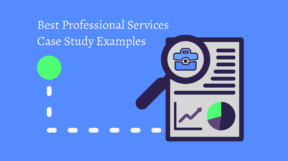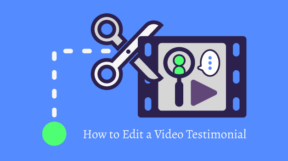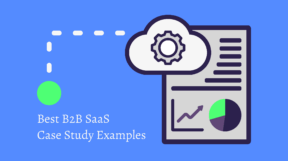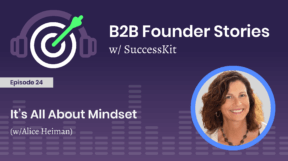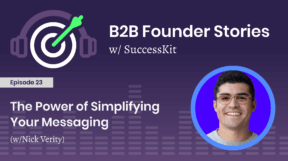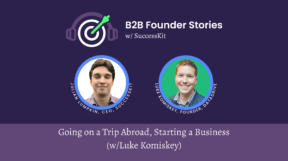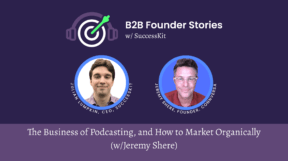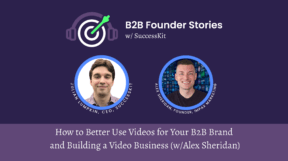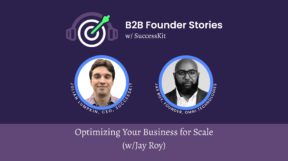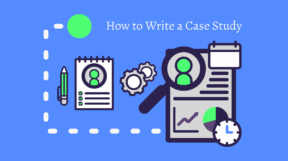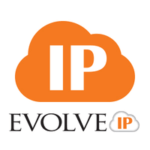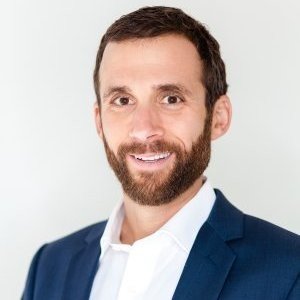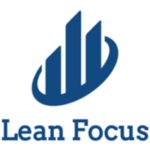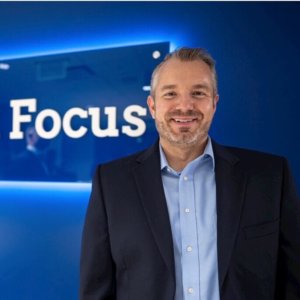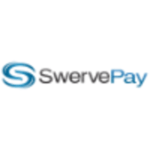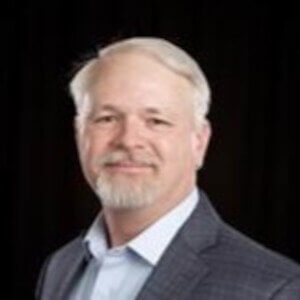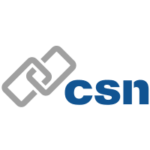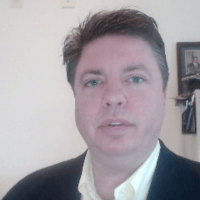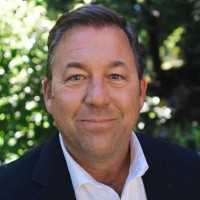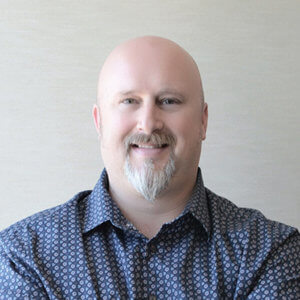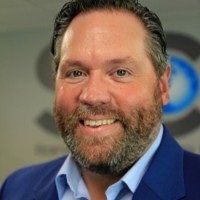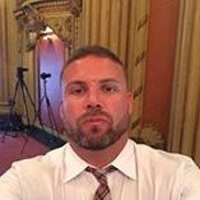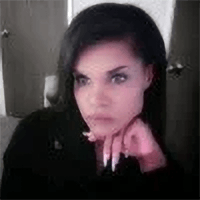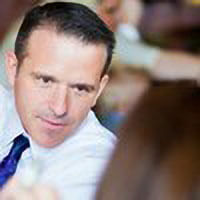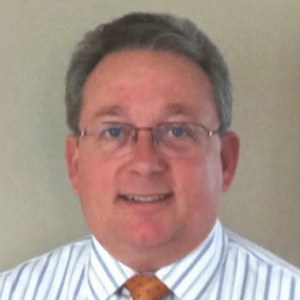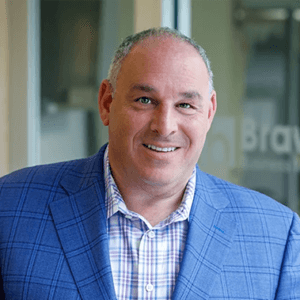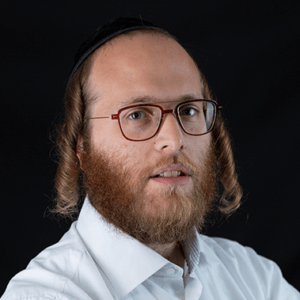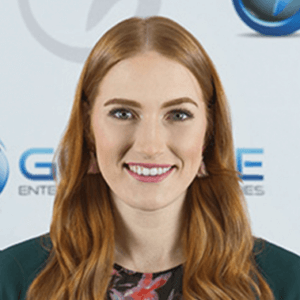Listen to this episode now on Spotify or Apple!
In the fourteenth episode of our B2B Founder Stories podcast, Scott Arias, who founded Ace Consulting, discusses how he’s transitioned from founder and CEO to serving as the ambassador for his company. He also describes how teaching as a university professor allowed him to start his company and how CEOs and founders must select the right employees in order to successfully relinquish control.
“It’s important to realize that the company is more important than you and your role, and when you realize that, you’re willing to modify and do whatever the company needs you to do. And right now, the company doesn’t need me to do, the company doesn’t need me to be in the daily operation. The company needs me to be out there shaking hands, developing relationships, and being the ambassador of ACE Consulting and make sure that we have a clear set direction for where we’re going in the future. And that’s a hard role because giving up control of daily operations takes a lot of courage, and it also takes a lot of humility.”
Scott Arias, Founder of Ace Consulting
Transcript of Podcast Episode 14: Transitioning from CEO to Ambassador (w/Scott Arias, Founder of Ace Consulting)
Julian Lumpkin: Welcome back to B2B Founder Stories w/ SuccessKit. My guest today is Scott Arias, the founder of ACE Consulting. Scott shares his journey from starting his company while also being a professor, and then ultimately leaving to run it full-time. He talks to me about his values on open communication and enabling his team to operate without constant oversight from him. This allowed his company to grow into what it is today. I hope you enjoy the conversation.
Julian Lumpkin: Scott, thank you for joining us on the B2B Founder Stories podcast.
Scott Arias: Good to be here. I appreciate you inviting me.
Julian Lumpkin: So to get started, in a few sentences, tell us about ACE Consulting.
Scott Arias: ACE Consulting, it has, is a Christian-based company that has four sectors. Training, pre-construction services, staffing and security services.
Julian Lumpkin: Great. And to give us a general idea, approximately how many employees do you guys have and how long have you been in business?
Scott Arias: We have about a hundred today. That number has itching. Asked me that because that number changes every day because we have so many people, but we have 172 people and we started in 2008. Well, business didn’t exist. The industry that we’re in really didn’t exist at that time and it started with me. I always tell people it started with me sitting in my underwear with my laptop.
Julian Lumpkin: Yeah. Let’s go back to that time, 2008, you and your laptop. What were you doing? What was your professional experience? Give us the lay of the land of where you were before starting the company.
Scott Arias: Well, I was an executive. I was a young guy. I was probably one of the youngest execs, I was one of the youngest executives in the company I worked. It was a billion-dollar company and I decided after a period of time that I had dealt with big, big issues and dealt with the stress and the situation and situations that existed for years. I was asked to relocate to Kansas and I’m a Kentuckian. I’m a Kentucky basketball fan and football fan, so I’m not going to go to Kansas where the Jayhawks are. So I told them, “Well thanks, but no thanks. I’m not moving. My family is here.” So I wanted to make a change. At that time, the Eastern Kentucky University asked me to come on board as a faculty member and I thought, “This is a perfect opportunity for me to become a faculty member, to still be able to have a steady income coming in, but be able to open my business.” Because you had summers off, had some… It wasn’t as demanding as a regular job. So that’s what I did. I went from making basically about $150 grand to making $50, and my wife said, “Are you crazy?” And I said, “Yes I am, but I will make up the difference.” So that’s what I did.
Julian Lumpkin: Wow, that’s interesting. So how long did you stay in the professor role at the company or the faculty role while also running the company? When did you move full-time to working on the company?
Scott Arias: Well, my intention was to go there and teach for a year and then I’d get my company rolling within that year. Well after that year, my company was rolling, although it took nine months to win my first contract. And I was a little bit concerned because nine months is a long time to pound the stone and try to get work. And then I got my first set of work and the first year we did 7,000, and I thought, “Well, you know what? Maybe there’s something to this.” And then I woke up 10 years later and I was in charge of the construction management program at Eastern. I was one of the senior faculty members and my company had gone from me to about 70 people. So it was kind of interesting and I got to a point where I realized, “You know what? I can’t do two things like I want to do them because I don’t like to do things half-heartedly.” So I decided, “You know what? I need to make a decision.” Actually, I went to a CEO group and the question I asked them was, “How can my company make more money and grow?” And I walked away from that seminar realizing that in order for me to do that, I had to quit the university and go at this full-time. And I did it that day and called my boss at the university and says, “You have me for the remainder of the year,” which was about 10 months “and then I’m out.” So that’s kind of where we were.
Julian Lumpkin: That’s interesting. And I can really see how a kind of full-time-lite job like a professorship is a good way to start a company or a good thing to do while you’re starting a company. Interesting that it ended up staying that way for 10 years instead of one. But it sounds like a very good, safe way to protect yourself while starting a company. So going back, kind of the one more question about the very beginning. Was it just you in the beginning? When did you transition from kind of winning the project, doing it yourself to bringing on a team?
Scott Arias: It was me for the first year. It was just me. About 18 months in, I had an opportunity in, it’s this kind of interesting, in Alaska of all places. And they said they had a need and it intersects me with something kind of interesting. Roger Schnabel, which is Parker Schnabel’s dad from the series Gold Rush, asked me to go to Alaska to work on a bridge with him. So it was pretty interesting because I’m a big fan of Gold Rush ASA, and I said, “Well, you know I really can’t because I’m here doing the professional thing.” And he said, “Well, do you know somebody?” And I was like, “Well yeah, I kind of know somebody.” So I brought somebody in. That led to my big break was a six-year project in North Carolina and that’s when I started bringing people in and I went from me to about 30 people in about a year and a half.
Julian Lumpkin: Wow. That is fast. And maybe that’s the answer to sort of my next question, but what was the biggest challenge of growing the business from something you did yourself to a real company as you are today? What was the hardest part about it?
Scott Arias: I think great question. I think more than anything is how your role evolves and changes. When you’re the founder, and I participate in a CEO group called Vistage and there’s a lot of people in there, some people are founders, some people are third, fourth generation. And when you’re the founder, you go from doing originally to teaching other people to do, to managing, to managing doing. And then the role that I’m in now, I always tell people I’m the ambassador of ACE. I don’t do as much as, I don’t really do anymore because I’ve trained my staff to do everything I need to do and they always joke that I’m no longer the expert, which I disagree with them. However, the truth is, is that they do it every single day. And it’s weird how my role has changed, and it’s important to realize that the company is more important than you and your role. And when you realize that, you’re willing to modify and do whatever the company needs you to do. And right now, the company doesn’t need me to do, the company doesn’t need me to be in the daily operation. The company needs me to be out there shaking hands, developing relationships, and like I said, being the ambassador of ACE Consulting and make sure that we have a clear set direction for where we’re going in the future. And that’s a hard role because giving up control of daily operations is, it takes, number one, it takes a lot of courage and it takes, beyond taking a lot of courage, it also takes a lot of humility because you’re no longer “the guy”. And most people who are in my position want to be “the guy”, so.
Julian Lumpkin: Yeah, it’s a common theme on this podcast just when I ask people about their stories and what the hardest part was. So kind of that transition of giving up control. So I’m curious to get a little more specific on that. What did it look like for you? What led to you making the transition from hands-on CEO, doing everything within the company to ambassador, working on the company?
Scott Arias: So about 18 months ago, the company, I realized that my role needed to change. And so I decided, I sat down and went to a meeting and I have a problem when I go to a meeting, whether I’m in charge of the meeting or not, I end up trying to be in charge unintentionally. So even if somebody else is supposed to be the moderator or the facilitator, I end up being, taking the meeting myself. So I wanted to get away from that. And so I just decided, “You know what? I’m not going to go to work for three weeks and I’m going to see what happens.” So unknown to everybody, I just quit going to work for three weeks. People called me, asked me what’s going on. I said, “Well, you know what? I’m going to be working from home for a little while.” And then I just took some calls and other calls I just ignored. And my number two and my management team unknowingly decided, “You know what? We need to pick up the pieces and move on.” And it was interesting. We weren’t in a busy time of year and that’s one of the reasons that I did it during that time. And they were a little freaked out like, “What’s going on?” However, it required them to do more. And fortunate for me, we had built a good management team, which had the capability. They just needed the baton to run with it. And thank God we did because that was 18 months ago. And then recently, I went through a medical issue where I end up, I’m a fairly young guy, I’m 47, so compared to probably most CEOs, but I actually got shingles in my eye. It was a terrible thing. It took me six weeks to get through. But because of the fact that I took myself out of that situation, the company continued to run like a finely-tuned machine. So in fact, I think it did better. So my CEO coach said, “Well, maybe you just don’t need to be more involved at all.” So I got a really good management team and then Dan knows what to do. And it was nice that I had that in case something like that goes wrong.
Julian Lumpkin: That’s fascinating. Yeah, and I’ve heard some version of the story many times now, I think actually. Tim Ferris shares a story I read a while ago about when he had his first company that he just kind of left when things got too hard and let people take over it and it ended up working out better. So I want to get into some specifics of when you made that decision to do that. Did you prepare anyone on the staff to say like, “All right, you’re going to sort of step into this role or you’re going to step into this role or you’re going to be in charge now?” Or is it really just you kind of saying, “I’m going to pull back and see what happens?”
Scott Arias: Well, I spent several years working with these people and not confident I had the right team in place to move the company forward. And I did it unknowingly to them is I didn’t intentionally say, “Hey, I’m stepping out of the role.” I just left because I wanted to see how they reacted. And obviously, I kept an ear to the ground to see things, see that it wasn’t becoming a disaster. But in the same token as I wanted to see what they were going to do, and I knew I had good people, I knew I selected the right people, I knew I trained the right people. I knew they were ready and able to do it. It was a matter of just pulling the plug and doing it, and I did. And my final decision was I went to that meeting and I was sitting there and as I was going through the meeting, I just thought, “God, they have control. They really are doing a good job. They know what they’re doing. And I’m doing, I’m actually at a point right now where they’re being held back because of me.” So like any good leader holding your people back, you need to get out of the way. So that’s what I did.
Julian Lumpkin: Okay. So you take a little kind of time off. When you kind of reengaged to the extent that you did, did you make a sort of reorganization within the company? Did you put someone in charge of this or sort of to take your role? Or did you just use it as an opportunity to change your role? Did any real structural changes come from this or is it more just a mindset shift?
Scott Arias: After three weeks, it was pretty significant because I came to work every day. My office is the first office when you walk into my office, and the reason I put it there is because I wanted to greet every employee that came to work every day. And so I wanted them to see me. And then I wanted my office to be empty for that three weeks. And then after that three weeks, I made it clear to the management team and the company, “You guys are capable of doing, this is why I did it. Now I don’t, I’m no longer going to go back and sit behind my desk in the office and you can see me. We’re going to continue like we’ve been continuing and I’m going to be, I’ll start working on Mondays from my house, and then the rest of the week I’ll be traveling to different places, so don’t expect me to be there and continue to do what you’re going to do.” And that was literally as much direction. And then from that I also said, “Here’s some good guideposts to follow within.” To a certain extent, you can’t just say, “Go do whatever.” There has to be some guideposts. So here’s a great one. We put a budget together every year that we have input from everybody. When you get a budget for a sector of the business, that’s your money. Go spend it how you want to spend it. If you want to spend more, come back and talk to me before you do it. So you set up a little bit of a guidepost, so people are not operating in a space where they’re going to create a major issue. And fortunate enough, I have really good people that are able to make those decisions about what to do with those funds. And we spend, our overhead is over $6 million a year. So that’s a lot of trust to give away. So you got to make sure that you go through the process of making sure they have a good budget and understanding that you have the right people in place.
Julian Lumpkin: What is your long-term plan for the company now?
Scott Arias: So about five years ago, I decided, “You know what? I’m not sure what I want to do with the rest of my life, but one thing I do want to do is I want to create something for not just myself, but for others.” And so we decided that, well, the first thing I did is we started tithing for the company. We worked with an organization called Lexington Leadership Foundation, and we took 10% of our earnings and we give it to them and they vet organizations to give money to. And we’re talking several hundreds, thousands of dollars every year. And we’re committed to doing that every year. We did it through the pandemic, we did it through rough times, good times and bad times because we wanted to be blessed. And not just because we want to be blessed, but because it’s the right thing to do when we were fortunate enough to be blessed through those times. But I decided I wanted to do it more for… I don’t just want to get rich, I want to provide a platform for others to create wealth for them and their family. So I’m turning my company into an ESOP and I said 10 years a few years ago, we’re about six years. And in six years, the company will transact us into an ESOP. I will move into a more of a consultant role and I’ll be in the chairman of the board and I’ll have a few other people in there, but my role will be a lot less involved. And they’re going to give me, the bank will give me my money and the employees will work for a period of time, a vesting period to be able to pay back that loan they gave me. And I will get the money for myself and live a happy life, and they will have an opportunity to create wealth for themselves. And that’s significant because we’re going to probably be about a $60 million company when we go to turnover. So you’re talking about a significant wealth for everybody from administrative assistant to the CEO.
Julian Lumpkin: Yeah. That’s a lot of down payments, a lot of down payments, college educations and lives changed. So kudos to you and your team for building something so successful. My final question, I know we’re up on our time here. You mentioned you’re kind of working from home and being an ambassador for the company. So can you tell us a little bit about what your day-to-day or week-to-week looks like now? What are you doing? Are you working full-time? Are you traveling? Tell us what you’re doing now as an ambassador for the company.
Scott Arias: Well, my typical Mondays is lining up my week. I set up my office. We’re actually having… My bedroom’s kind of like a suite area, and upstairs is my office. And I’ve said it, I established, when I went through this process, I established a real office for me, having all the things I need in order to operate. So Mondays is typically going there, get myself organized. And the rest of the week, we have three different offices right now, and I travel between the multiple offices and those areas. Go to Washington, DC periodically for the different sectors of our business. And really that’s what it is. I mean, I work a typical schedule about 50 hours, 50, 60 hours a week, which I think is typical. And I just go out and meet people, sit down. Yesterday I went to Starbucks, met with somebody, a developer to put together a mutual beneficial agreement. And then I went from there, did a podcast of my own, went on to meet another person in the afternoon. And that’s my day. So I like talking, I like talking to people and I humbly say, and I’m good at it. So that’s what I do. And the work actually goes on behind the scenes. And once a week, I get a report and if I have a question about it, then I have a question about it. So.
Julian Lumpkin: That’s awesome, man.
Scott Arias: That’s pretty much it.
Julian Lumpkin: It sounds like you, yeah, it sounds like you enjoy what you do. It kind of shines through in the way you talk about it, and that’s not always the case. So that’s great. And I commend you for building such a successful company and sharing, setting up to share that wealth with your employees. And finally, thanks so much for coming on the podcast and telling your story here.
Scott Arias: Well, I appreciate it. And I do want to say one last thing that I think a lot, I get a lot of credit for doing, for creating the company, but ultimately it was through God’s will and grace that helped me along the way. And it’s less about me and more about others and what God has done for me and what he continues to do for me every day. So I just wanted to thank everybody else because in reality, you can’t do anything in this world by yourself. You have to have help. And I had help not only from people, but from God, so. And thank you for having me on your podcast.
Julian Lumpkin: Awesome. Thanks again, Scott.
Scott Arias: All right. Take care.
Julian Lumpkin: Thanks for listening to B2B Founder Stories w/ SuccessKit. We are building up our archive and aiming to have stories from all different types of founders so you can find examples that really resonate with you, your business, and your future goals. Feel free to browse our previous episodes, and we look forward to bringing you the next one soon.
Conclusion
Subscribe to the B2B Founder Stories podcast on Spotify and Apple and never miss an episode!
If you have an idea for a future topic you’d like addressed or if you’d like to be a guest on the series, contact Julian via the form on our Learn More page.
![Featured image for the post titled "Transitioning from CEO to Ambassador w/Scott Arias [PODCAST]"](https://successkit.io/wp-content/uploads/2023/01/successkit-podcast-episode-14-scott-arias.png)



